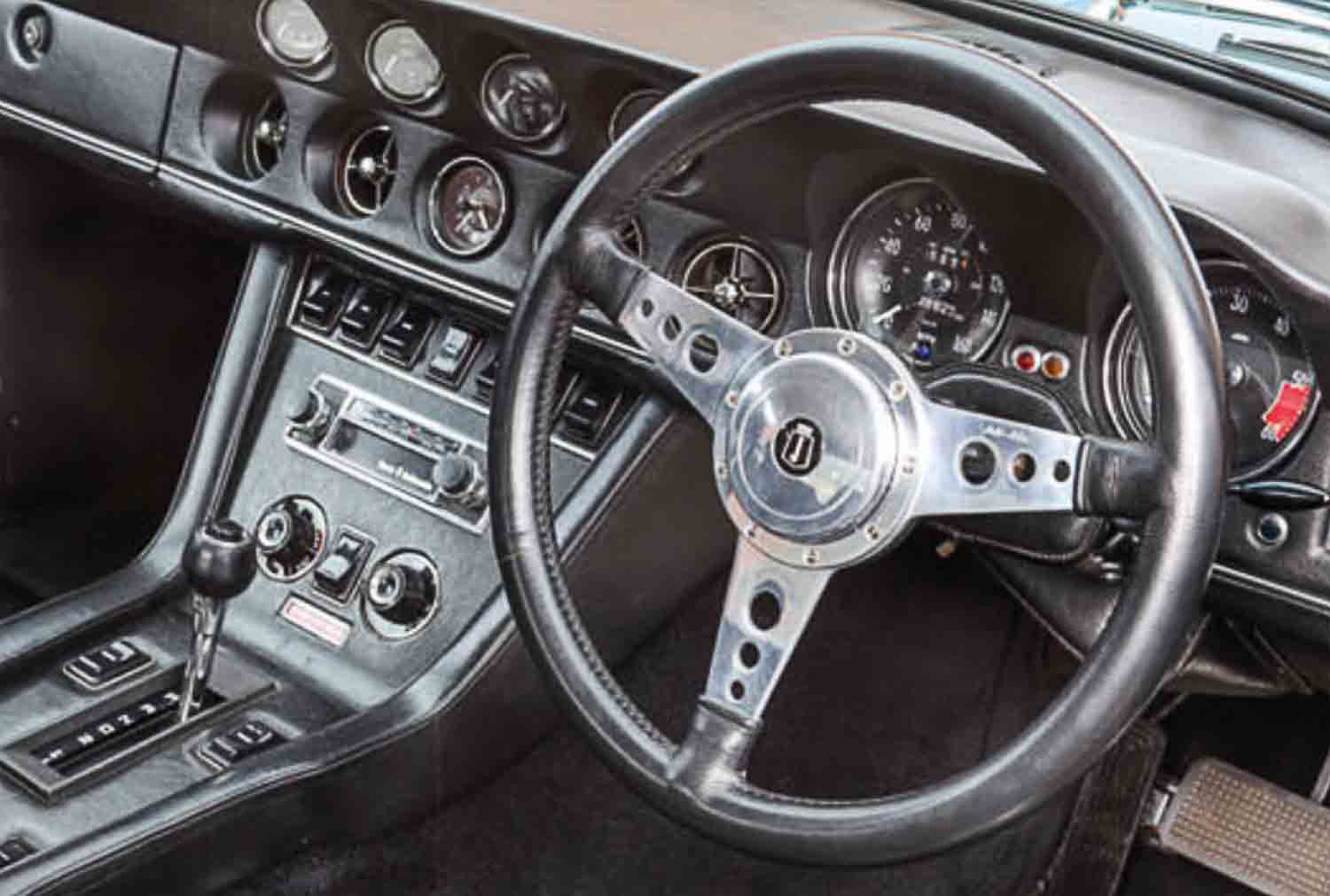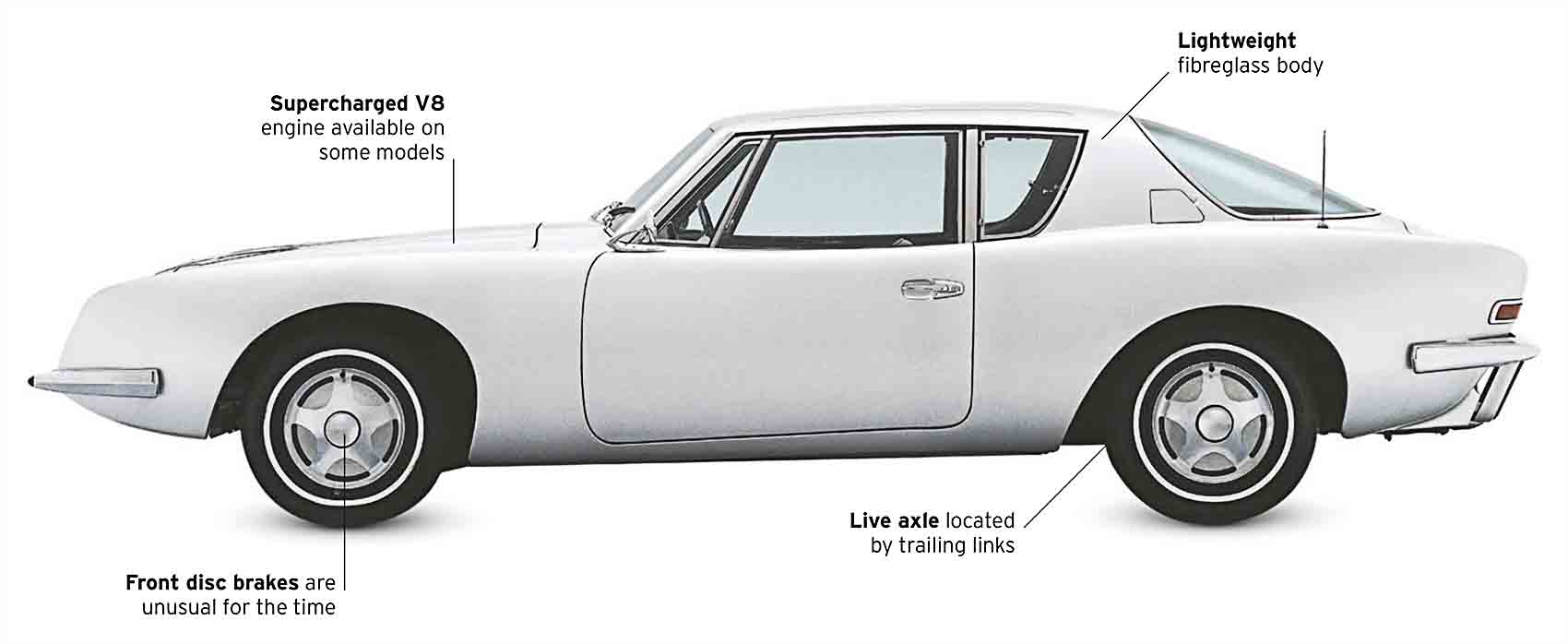
Fast Sports Tourers
When it came to engines, there were two options at the top end of the sports tourer spectrum. One of these was adopted by aristocratic names such as Bentley and Aston Martin, which built their own smooth and powerful six-cylinder and V8 engines to go into cars featuring traditional or Italian-inspired lines. The alternative approach, typified by Jensen, was to drop a big, understressed, American V8 into a stylish body. This delivered effortlessly glamorous motoring without the development costs necessary for a bespoke power unit. Both methods worked, and they produced some of the swiftest and most dazzling cars of the era.
Jensen Interceptor, 1966

| Origin | UK |
| Engine | 6,276 cc, V8 |
| Top speed | 135 mph (217 km/h) |
A glamorous cocktail of an Italian-styled body, American V8 engine, and genteel British craftsmanship, the Interceptor became the car for the successful swingers of the late 1960s and 1970s. It was handsome, fashionable, and formidably fast, and featured FF-derivative pioneered performance, four-wheel drive, and anti-lock braking

Four-wheel drive wonder
The Jensen FF was launched with the Interceptor in 1966 and looked similar, though both the chassis and body were different. Underneath it had Ferguson four-wheel drive, and Dunlop Maxaret anti-lock braking, giving it extraordinary road manners for its era.

Handcrafted cockpit
As a long-distance tourer, the interior was designed for comfort, with four large, leather, armchair-like seats and plush Wilton carpets. It was, however, a driver’s car, with a beautifully crafted dashboard. The veneer-clad centre console featured a wealth of dials and toggle switches, that some commentators compared to the flight deck of a small aircraft.
Mercedes-Benz 300SE, 1962

| Origin | Germany |
| Engine | 2996 cc, straight-six |
| Top speed | 124 mph (200 km/h) |
One of Germany’s finest cars of the early 1960s, the 300SE had a race-proven, fuel-injected, six-cylinder engine, air suspension, and disc brakes to justify the substantial price jump from the 220SE. The sophisticated coupe or convertible body penned by Paul Bracq was virtually unchanged until 1971.
Facel Vega Facel II, 1962

| Origin | France |
| Engine | 6,286 cc, V8 |
| Top speed | 133 mph (214 km/h) |
Big, bold, unquestionably French, and powered by a Chrysler V8, the Facel II was firmly in the Grand Routier tradition. Sadly it was Facel’s last gasp—the company shut its doors for good following production of only 180 of these expensive, exclusive cars.
Studebaker Avanti, 1962

| Origin | USA |
| Engine | 4,736 cc, V8 |
| Top speed | 120 mph (193 km/h) |
The brainchild of new Studebaker boss Sherwood Egbert, the Avanti had a Raymond Loewy-styled, fibreglass sports car body married to the chassis of the compact Lark. Studebaker struggled to build it and ended production in 1963, but it was revived as the Avanti II with Chevrolet V8 power.
Gordon-Keeble, 1964

| Origin | UK |
| Engine | 5,395 cc, V8 |
| Top speed | 136 mph (219 km/h) |
British engineering, a powerful American V8 engine, and delicately beautiful Italian styling by Bertone went into creating this excellent GT. Parts supply problems hampered production and caused financial woes, eventually sinking the company. Just 100 Gordon-Keebles were built, and happily almost all of them survive.
It is a quote. The Classic Car Book – The Definitive Visual History 2016





No Comments